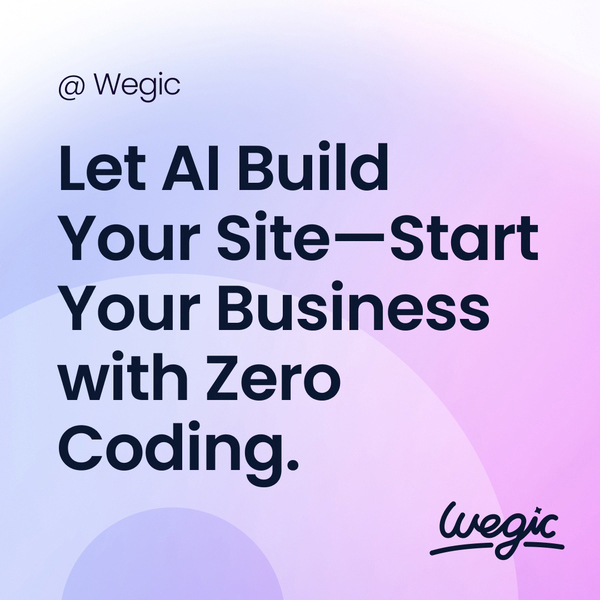Create Web App from Excel Spreadsheet AI Trends
Create Web App from Excel Spreadsheet AI in 3 Steps
Create Web App from Excel Spreadsheet AI
In recent years, the rise of no code web builders has revolutionized the way individuals and businesses create websites. No code web builders provide an easy, efficient, and cost-effective solution for building customized websites without having to write a single line of code. This innovative technology has leveled the playing field, allowing anyone, regardless of their technical expertise, to create stunning websites with ease.

A Beginner’s Guide to Create Web App from Excel Spreadsheet AI
Create Web App from Excel Spreadsheet AI
1. Wix
Wix is one of the most popular website building sites on the market, and for good reason. With Wix, you can choose from hundreds of customizable templates and easily drag and drop elements to create your website. Wix also offers a range of features such as a built-in blog, e-commerce capabilities, and SEO tools to help you drive traffic to your website. Additionally, Wix has a user-friendly interface that makes it easy for beginners to create a stunning website in a matter of hours.
2. Squarespace
Squarespace is another top website building site that is known for its sleek and modern templates. Squarespace offers a range of customization options, allowing you to personalize your website to fit your brand. With Squarespace, you can easily add images, videos, and text to create a visually appealing website. Squarespace also offers e-commerce capabilities, making it a great option for businesses looking to sell products online. Additionally, Squarespace has a built-in analytics tool that allows you to track traffic and engagement on your website.
3. WordPress
WordPress is a versatile website building platform that is used by millions of websites around the world. With WordPress, you have full control over your website’s design and functionality, making it a great option for those looking for more customization options. WordPress offers a wide range of themes and plugins that allow you to add features such as contact forms, social media integration, and e-commerce capabilities to your website. Additionally, WordPress is highly scalable, making it a great option for businesses of all sizes.
4. Weebly
Weebly is a user-friendly website building site that is perfect for beginners. With Weebly, you can choose from a range of professionally designed templates and easily customize them to fit your needs. Weebly also offers drag and drop functionality, making it easy to add elements such as images, videos, and text to your website. Weebly also offers e-commerce capabilities, making it a great option for small businesses looking to sell products online. Additionally, Weebly offers built-in SEO tools to help you drive traffic to your website.
5. Shopify
Shopify is a popular website building site that is specifically designed for e-commerce businesses. With Shopify, you can create a stunning online store with ease. Shopify offers a range of customizable templates and features such as product listings, payment processing, and order tracking. Shopify also offers a range of marketing tools to help you drive traffic to your online store. Additionally, Shopify offers 24/7 customer support to help you with any issues that may arise.
In this article, we will explore the process of web application development, including the key steps involved, the technologies used, and the best practices for creating a successful web application.
Key Steps in Web Application Development:
1. Planning and Requirements Gathering:
The first step in web application development is to gather requirements and define the scope of the project. This involves understanding the needs of the end-users, identifying key features and functionalities, and setting goals for the project. During this phase, it is important to collaborate with stakeholders to ensure that the project meets their expectations and aligns with the overall business objectives.
2. Design and Wireframing:
Once the requirements have been gathered, the next step is to create a design for the web application. This involves wireframing, which is a visual representation of the layout and structure of the application. The design should be user-friendly, visually appealing, and intuitive to navigate. It is important to consider factors such as responsive design, accessibility, and usability in the design phase.
3. Development:
The development phase involves writing code to build the web application based on the design and requirements gathered earlier. Developers use programming languages such as HTML, CSS, and JavaScript to create the front-end of the application, while back-end development involves using server-side languages such as PHP, Ruby, or Python to handle the logic and data processing.
4. Testing and Quality Assurance:
Once the web application is developed, it is important to conduct thorough testing to ensure that it functions correctly and meets the specified requirements. This involves testing for usability, performance, security, and compatibility across different devices and browsers. Quality assurance is essential to identify and fix any bugs or issues before the application is launched.
5. Deployment and Maintenance:
After testing is complete, the web application is deployed to a server or hosting platform where it can be accessed by users. It is important to monitor the performance of the application and make updates as needed to ensure that it remains secure, functional, and up-to-date. Regular maintenance is key to the long-term success of a web application.
Technologies Used in Web Application Development:
There are a wide range of technologies that can be used in web application development, depending on the requirements of the project. Some of the most popular technologies include:
– Front-end frameworks such as React, Angular, and Vue.js, which are used to build interactive user interfaces.
– Back-end frameworks such as Ruby on Rails, Django, and Express.js, which provide the structure and functionality for the back-end of the application.
– Databases such as MySQL, MongoDB, and PostgreSQL, which are used to store and manage data for the application.
– Cloud services such as AWS, Microsoft Azure, and Google Cloud Platform, which provide scalable and flexible infrastructure for web applications.
– API services such as REST and GraphQL, which allow web applications to communicate with external systems and services.
Best Practices for Web Application Development:
To ensure the success of a web application, it is important to follow best practices throughout the development process. Some key best practices include:
– Following a structured development process, including planning, design, development, testing, and deployment.
– Implementing security measures to protect the application from cyber threats and data breaches.
– Using responsive design to ensure that the application is accessible and functional across different devices and screen sizes.
– Optimizing performance to improve the speed and efficiency of the application.
– Conducting usability testing to gather feedback from users and make improvements to the application.
– Regularly updating and maintaining the application to fix bugs, add new features, and stay current with technology trends.

Create Web App from Excel Spreadsheet AI Checklist
Create Web App from Excel Spreadsheet AI
In conclusion, AI web builders are transforming the way websites are created by offering a fast, cost-effective, and user-friendly solution to design and development. These tools enable individuals and businesses to create professional and customized websites without the need for technical skills or assistance. With advanced features such as design customization, mobile responsiveness, SEO optimization, and e-commerce capabilities, AI web builders are empowering users to build effective online presences that drive growth and success. As technology continues to evolve, AI web builders will play a crucial role in shaping the future of web design and digital marketing.


